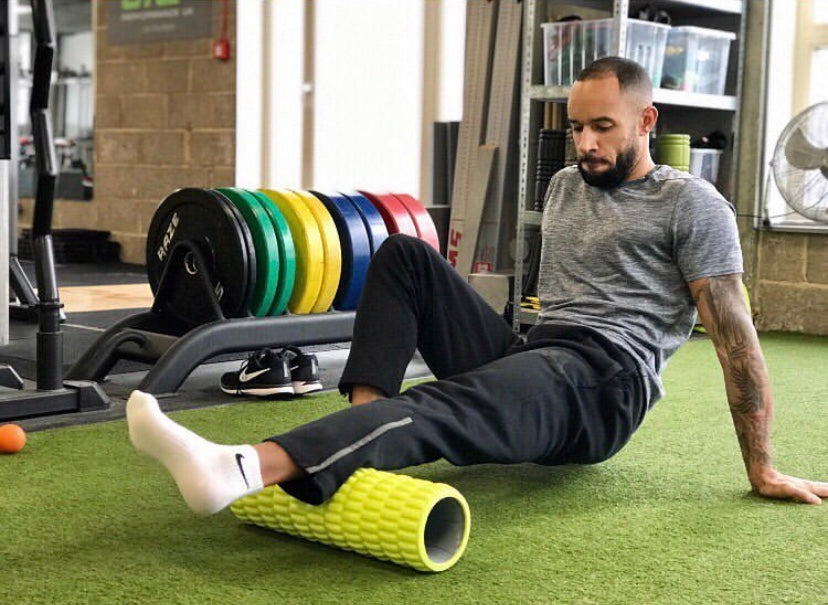Foam rollers have gained popularity as versatile tools for self-myofascial release and muscle recovery. While commonly used for massaging the legs and back, foam rollers can also be effectively utilised as shoulder rollers. Shoulder tension and tightness are common issues for many individuals due to factors like poor posture, stress, and overuse.
Step-by-Step Guide:
-
Warm Up: Begin by performing a brief warm-up to prepare the shoulder muscles. Perform gentle shoulder circles, arm swings, and stretches to increase blood flow and flexibility.
-
Select the Right Foam Roller: Choose a high-density foam roller suitable for your needs. Ensure it provides adequate firmness to effectively target the shoulder muscles. The size should allow for full coverage of the shoulder area.
-
Upper Back Release: Lie on your back with your knees bent and feet flat on the floor. Position the foam roller horizontally just below your shoulder blades. Cross your arms over your chest or place your hands behind your head for support. Slowly roll the foam roller up and down along your upper back, focusing on areas of tension or discomfort. Spend extra time on these areas, applying gentle pressure to allow the muscles to relax.
-
Shoulder Release: Reposition the foam roller vertically on the floor. Sit or stand facing the roller and place one shoulder on top of the foam roller. Ensure the roller aligns with the top of your shoulder. Extend the opposite arm straight out to the side for balance and support. Apply gentle pressure and roll the foam roller along the side of your shoulder, from the top to the midpoint. Pause on any tender spots or knots, taking deep breaths to encourage relaxation.
-
Front of the Shoulder Release: Rotate your body to face away from the foam roller while maintaining the vertical position. Position the foam roller on the front of your shoulder, just below the collarbone. Rest your body weight on the roller, applying controlled pressure. Roll the foam roller along the front of your shoulder, from the collarbone to the midpoint of the upper arm. Pay attention to any areas of tightness and provide them with extra attention.
-
Mindful Rolling: As you roll, focus on your breath and maintain a relaxed state of mind. Avoid applying excessive pressure or rolling too quickly, as this may cause discomfort or injury. The goal is to release tension and promote flexibility, so be mindful of your body's response and adjust the intensity as needed.
Incorporating a foam roller as a shoulder roller into your routine can provide significant benefits for relieving shoulder tension, enhancing mobility, and promoting overall shoulder health.










Leave a comment
This site is protected by hCaptcha and the hCaptcha Privacy Policy and Terms of Service apply.